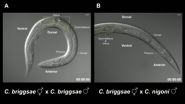(Press-News.org) BUFFALO, N.Y. – Contrary to widespread media reports, the collapse of several financial firms during the 2008 economic crisis was not triggered by unsettled stock trades, according to new research from the University at Buffalo School of Management.
The study, forthcoming in the Journal of Financial Economics, analyzed the open interest of fails-to-deliver — stock trades in which shares are not delivered within the three-day trading cycle — in the days before and after the stock crashes of American Insurance Group, Bear Stearns, Lehman Brothers and Merrill Lynch.
The researchers, including co-author Veljko Fotak, PhD, assistant professor of finance and managerial economics in the UB School of Management, particularly focused on fails caused by naked short sales, deals initiated for securities the seller does not own and has not arranged to borrow. In each case, they found these trades were not responsible for falling stock prices.
"Short sellers have been accused of using fails-to-deliver as a way to cause sharp declines in stock prices and profit from the resulting collapse of several major financial institutions," Fotak says. "However, we found that on most days there weren't enough settlement fails to cause significant price changes. And when fails were unusually high, it was only after price declines generated by other negative economic news."
A photo of Fotak is available here: http://www.buffalo.edu/news/releases/2014/07/042.html.
The study examined 1,492 New York Stock Exchange and 2,381 Nasdaq common-share trades from January 2005 to June 2008. The research showed that although regulators have been focusing on short sales, the impacts of short sales that fail to deliver and those that deliver on time are similar, and both largely beneficial for the market.
"Our results clearly show that restricting fails-to-deliver hurts the market," Fotak says. "These trades affect market liquidity and significantly reduce pricing errors, order imbalances and volatility over a single day."
Recent restrictions that mandate stock-borrowing arrangements before opening a deal essentially ban naked short sales and fails-to-deliver. Fotak says regulators should instead focus on eliminating the economic incentives for delivery failures by improving liquidity and transparency in the market.
INFORMATION:
Fotak collaborated on the study with Vikas Raman, PhD, assistant professor at Warwick Business School, and Pradeep K. Yadav, PhD, professor and W. Ross Johnston Chair in Finance at the University of Oklahoma.
The UB School of Management is recognized for its emphasis on real-world learning, community and economic impact, and the global perspective of its faculty, students and alumni. The school also has been ranked by Bloomberg Businessweek, the Financial Times, Forbes and U.S. News & World Report for the quality of its programs and the return on investment it provides its graduates. For more information about the UB School of Management, visit mgt.buffalo.edu.
Short sellers not to blame for 2008 financial crisis, study finds
2014-07-29
ELSE PRESS RELEASES FROM THIS DATE:
Informal child care significantly impacts rural economies, MU study finds
2014-07-29
COLUMBIA, Mo. – The child care industry has grown significantly in recent years, contributing considerably to the national economy through job creation and increased opportunities for parents to work. However, little knowledge exists of the size and economic impact of child care, especially informal child care, on rural economies. Now, University of Missouri researchers have studied the child care sector in Kansas, particularly in rural areas, and have found that informal child care services create a large economic impact in the state.
Tom Johnson, a professor in the ...
Malaria vaccine shows continued protection during 18 months of follow-up
2014-07-29
A vaccine previously shown to reduce malaria in young infants and children reduces larger numbers of malaria cases in areas of higher malaria transmission, according to results from an ongoing clinical trial published in PLOS Medicine. The effect of vaccination diminished over time, but protection against clinical malaria remained evident 18 months after vaccination.
In the new report, the RTS,S Clinical Trials Partnership* update estimates of vaccine efficacy (the reduction in the risk of malaria in participants who received the vaccine compared to those who received ...
Small increases in Ugandan urbanicity tied to CVD risk factors
2014-07-29
Urban dwellers tend to have higher risk for cardiovascular diseases than people living in more rural locations. In a new study published in PLOS Medicine, Johanna Riha and colleagues, researchers from the University of Cambridge and the MRC/UVRI Research Unit in Uganda, have found that even within rural communities in Uganda that all lacked paved roads and running water, people living in villages with relatively more urban features—such as schools and health facilities –were more likely to have risk factors for cardiovascular diseases such as physical inactivity, lower ...
'Killer sperm' prevents mating between worm species
2014-07-29
VIDEO:
These are time-lapse videos of Caenorhabditis hermaphrodites that were (A) mated with the same species and (B) mated with a different species. Male sperm were fluorescently labeled and appear as...
Click here for more information.
The classic definition of a biological species is the ability to breed within its group, and the inability to breed outside it. For instance, breeding a horse and a donkey may result in a live mule offspring, but mules are nearly always sterile ...
Urbanization of rural Africa associated with increased risk of heart disease and diabetes
2014-07-29
The increasing urbanisation of rural areas in sub-Saharan Africa could lead to an explosion in incidences of heart disease and diabetes, according to a new study carried out in Uganda which found that even small changes towards more urban lifestyles was associated with increased risk of cardiovascular and metabolic diseases.
Over 530 million people live in rural areas of sub-Saharan Africa, where rates of cardiovascular and metabolic diseases tend to be much lower than in urban areas. However, many of these areas are becoming increasingly urbanised, with people living ...
Mysterious molecules in space
2014-07-29
WASHINGTON D.C., July 29, 2014 – Over the vast, empty reaches of interstellar space, countless small molecules tumble quietly though the cold vacuum. Forged in the fusion furnaces of ancient stars and ejected into space when those stars exploded, these lonely molecules account for a significant amount of all the carbon, hydrogen, silicon and other atoms in the universe. In fact, some 20 percent of all the carbon in the universe is thought to exist as some form of interstellar molecule.
Many astronomers hypothesize that these interstellar molecules are also responsible ...
This week from AGU: Cell tower rain gauges, lightning channels, North Sea storm surge
2014-07-29
This Week From AGU: Cell phone tower rain gauges, lightning channels, North Sea storm surge
From AGU's blogs: Dropped cell phone calls become rain gauges in West Africa
A shaky cell phone connection during a rainstorm can be an annoying nuisance. But now scientists are showing that these weakened signals can be used to monitor rainfall in West Africa, a technique that could help cities in the region better prepare for floods and combat weather-related diseases, according to a new study accepted for publication in Geophysical Research Letters, a journal of the American ...
Penn team makes cancer glow to improve surgical outcomes
2014-07-29
The best way to cure most cases of cancer is to surgically remove the tumor. The Achilles heel of this approach, however, is that the surgeon may fail to extract the entire tumor, leading to a local recurrence.
With a new technique, researchers at the University of Pennsylvania have established a new strategy to help surgeons see the entire tumor in the patient, increasing the likelihood of a positive outcome. This approach relies on an injectable dye that accumulates in cancerous tissues much more so than normal tissues. When the surgeon shines an infrared light on the ...
Huge waves measured for first time in Arctic Ocean
2014-07-29
As the climate warms and sea ice retreats, the North is changing. An ice-covered expanse now has a season of increasingly open water which is predicted to extend across the whole Arctic Ocean before the middle of this century. Storms thus have the potential to create Arctic swell – huge waves that could add a new and unpredictable element to the region.
A University of Washington researcher made the first study of waves in the middle of the Arctic Ocean, and detected house-sized waves during a September 2012 storm. The results were recently published in Geophysical Research ...
Underwater elephants
2014-07-29
In the high-tech world of science, researchers sometimes need to get back to basics. UC Santa Barbara's Douglas McCauley did just that to study the impacts of the bumphead parrotfish (Bolbometopon muricatum) on coral reef ecosystems at two remote locations in the central Pacific Ocean.
Using direct observation, animal tracking and computer simulation, McCauley, an assistant professor in the Department of Ecology, Evolution and Marine Biology, and his colleagues sought to understand whether the world's largest parrotfish is necessary for positively shaping the structure ...



